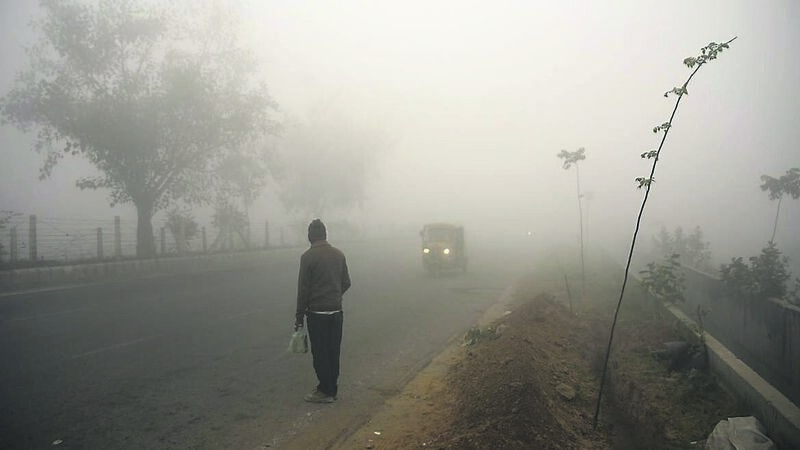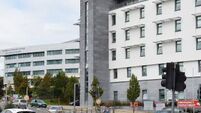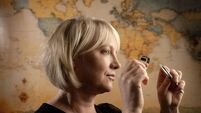Change is in the air as result of Covid pandemic

CHOKED: Smog in Delhi, India. Pollution levels there fell hugely during the Covid lockdown
SCIENTISTS have been investigating the underlying causes of Covid-19 growth in a bid to determine why certain areas have been hit harder than others.
There are numerous variables; population ages, density and the degree of implementation of social distancing policies. But perhaps the most important factor is the relationship between air quality and infection rates.
Research published in June by Italian scientists questioned whether atmospheric pollution could be considered a co-factor in the extremely high level of Coronavirus lethality.
Edoardo Conticini, Bruno Frediani and Dario Caro focused on the Lombardy and Emilio Romagna regions of the country; two areas hit hardest by the virus. They concluded that “a prolonged exposure to air pollution leads to a chronic inflammatory stimulus, even in young and healthy subjects.” They stated that the presence of polluted air in these two regions “may partly explain a higher prevalence and lethality of a novel, very contagious, viral agent such as SARS-CoV-2”.
Further research by Professor Matthew Cole, conducted with his colleagues Ceren Ozgen and Eric Strobl at the University of Birmingham, found “compelling evidence” of a link between air quality and the rate of virus uptake. The research found that a small, single unit increase in people’s long-term exposure to pollution particles raises infections and admissions by about 10% and deaths by 15%.
Long-term exposure to high levels of pollution can severely weaken immune systems. Air pollution can exacerbate pre-existing respiratory conditions such as asthma and negatively affect lung and heart function.
A number of these pollutants can be hazardous to health such as Nitrous Oxides and Ozone, but the most destructive to human health is Particulate Matter 2.5 (PM2.5). These are tiny airborne particulate matter with a diameter of less than 2.5 micrometres that are produced via the burning of fossil fuels and the combustion of petrol and diesel in motor vehicles.
The ultrafine particles can penetrate deep into the respiratory tract, moving from the lungs into the blood stream; increasing the frequency and severity of respiratory and cardiopulmonary disorders.
Air pollution is responsible for the deaths of about 400,000 people in Europe every year. The EPA Report on Irish Air Quality in 2019 stated that 1,180 deaths per year were due to poor air quality. Government agencies use an air quality index (AQI) to communicate to the public how safe the air is at a given time. This is based on measurements of pollutants like PM2.5. The WHO recommends a reading of 25 or lower to ensure that the air is sufficiently safe, particularly for people with underlying health conditions.
As lockdowns shut factories and kept cars off the roads, global pollution levels have fallen drastically. Cities once choked with smog had, for a brief period, looked upon clear blue skies. In Delhi, AQI levels often reach 200 and have on occasion reached life-threatening range of 900. The absence of Delhi’s 11 million registered cars and the forced closure of industrial and construction sites meant AQI levels regularly fell below 20. Residents of Jalandhar in Punjab were able to see the Dhauladhar mountain range. The peaks, over 120 miles away, had not been sighted on the Punjab horizon for almost 30 years.
Thailand’s capital, Bangkok, which prior to the lockdown had closed schools because the pollution had become hazardous, experienced a similar transformation in air quality. The waters of Venice, no longer disrupted by boats loaded with tourists, have entranced passers-by with the sight of fish shoals and multi-coloured plant-life sparkling beneath the clear blue water. Birdsong, so often drowned out by traffic, became the soundtrack to some of the world’s most built up urban centres.
In response to Covid 19, cities worldwide have developed strategies to both reduce the volume of traffic on their roads and to expand cycling and walking options. In Milan, the capital of Lombardy; the mayor has developed the Strade Aperte plan, focused on creating 35km of new cycle routes, widening pavements for pedestrians and reducing parking spaces to deter drivers from entering the city centre.
Polling data from 21 European cities showed a clear majority in favour of similar measures; geared towards the prevention of a return to pre-pandemic air quality levels. The survey, at the end of May, covered cities in France, Germany, Italy, Spain, Belgium and the UK. City dwellers were asked if they agreed officials should take action to curb air pollution by reserving more public space for walking, cycling and public transport. According to data provided to POLITICO, there was strong support for banning cars from urban areas and for expanding cycle lanes and pedestrian paths.
The enforced reduction in pollutant levels has also led to a growing recognition of the value of the natural world and our connection to it. The motivation to cut pollution rates has aligned with the larger imperative to tackle the issue of climate change. In April, UN Secretary António Guterres highlighted the need to exit the Coronavirus crisis by taking a new, more adventurous path; shunning a return to the status quo. He described post pandemic planning as “a profound opportunity” to steer the world on “a path that tackles climate change, protects the environment, reverses biodiversity loss and ensures the long-term health and security of humankind”.
Air pollution is a killer; taking the lives of hundreds of thousands of people every year. Its newfound capacity to weaponize airborne viruses like Covid 19 makes it even more of an imperative to dramatically lower emissions.
The lockdown has caused great economic pain, but also given us a glimpse at what a carbon zero future might look like: cleaner, healthier air, with urban and natural environments existing in unison. The natural world is resilient and can recover if given enough time. We just need to take our foot off the gas.







 App?
App?




